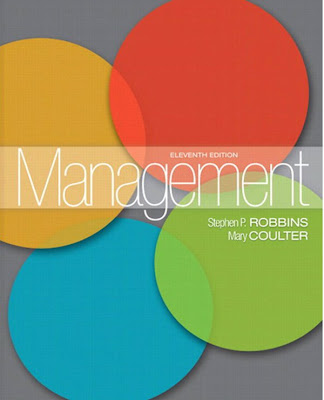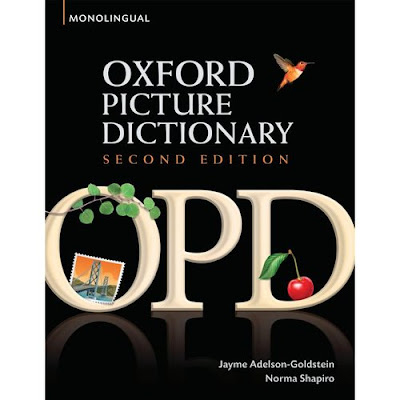Disiplin merupakan kata yang sering kita ketahui yang berupa ketentuan atau peraturan-peraturan yang secara eksplisit mecakup sanksi-sanksi yang akan diterima jika terjadi pelanggaran terhadap ketentuan-ketentuan tersebut. Menurut Soegeng Prijodarminto (1992), disiplin adalah suatu kondisi yang tercipta dan terbentuk melalui proses dari serangkaian perilaku yang menunjukkan nilai-nilai ketaatan, kepatuhan, kesetiaan, ketenteraman, ketearturan, dan ketertiban.
Dalam kaitannya dengan disiplin kerja, Siswanto (1989) mengemukakan bahwa disiplin kerja adalah suatu sikap menghormati, menghargai, patuh dan taat terhadap peraturan-peraturan yang berlaku. Baik yang tertulis maupun yang tidak tertulis serta sanggup menjalankannya dan tidak akan mengelak menerima sanksi-sanksi apabila ia melanggar tugas dan wewenang yang diberikan kepadanya. Sementara itu, Jerry Wyckoff dan Barbara C. Unel (1990), mendefinisikan disiplin sebagai suatu proses bekerja yang mengarah kepada ketertiban dan pengendalian diri.
Dari beberapa pengertian yang diungkapkan di atas tampak bahwa, disiplin pada dasarnya merupakan tindakan manajemen untuk mendorong agar para anggota organisasi dapat memenuhi berbagai ketentuan dan peraturan yang berlaku dalam suatu organisasi tersebut, yang di dalamnya mencakup:
- adanya tata tertib atau ketentuan-ketentuan
- adanya kepatuhan para pengikut
- adanya sanksi bagi pelanggar
Pada bagian lain, Jerry Wyckoff dan Barbara C. Unel (1990), menyebutkan bahwa disiplin kerja adalah kesadaran, kemauan dan kesediaan kerja orang lain agar dapat taat dan tunduk terhadap semua peraturan dan norma yang berlaku. Kesadaaran kerja adalah sikap sukarela dan merupakan panggilan akan tugas dan tanggung jawab bagi seorang karyawan. Karyawan akan mematuhi atau mengerjakan semua tugasnya dengan baik dan bukan mematuhi tugasnya itu dengan paksaan. Kesediaan kerja adalah suatu sikap perilaku dan perbuatan seseorang yang sesuai dengan tugas pokok sebagai seorang karyawan. Karyawan harus memiliki prinsip dan memaksimalkan potensi kerja, agar karyawan lain mengikutinya sehingga dapat menanamkan jiwa disiplin dalam bekerja.
Menurut Wayne Mondy dan Robert M. Noe (1990), disiplin adalah status pengendalian diri seseorang karyawan sebagai tanda ketertiban dan kerapian dalam melakukan kerjasama dari sekelompok unit kerja di dalam suatu organisasi (
someone status selfcontrol as orderliness sign order and accuration in doing cooperation from a group of unit work in a organization)
Jackclass (1991), membedakan disiplin dalan dua kategori, yaitu self dicipline dan social dicipline. Self dicipline merupakan disiplin pribadi karyawan yang tercermin dari pribadinya dalam melakukan tugas kerja secara rutin yang harus dilaksanakan, sedangkan social dicipline adalah pelaksanaan disiplin dalam organisasi secara keseluruhan.
Menurut Daniel M. Colyer. 1991), disiplin pada umumnya termasuk dalam aspek pengawasan yang sifatnya lebih keras dan tegas (
hard and coherent). Dikatakan keras karena ada sanksi dan dikatakan tegas karena adanya tindakan sanksi yang harus dieksekusi bila terjadi pelanggaran.
Terdapat dua jenis disiplin dalam organisasi, yaitu:
- Disiplin preventif
- Disiplin korektif (Sondang P. Siagaan, 1996).
Disiplin preventif adalah tindakan yang mendorong para karyawan untuk taat kepada berbagai ketentuan yang berlaku dan memenuhi standar yang telah ditetapkan. Artinya, melalui kejelasan dan penjelasan tentang pola sikap, tindakan dan prilaku yang diinginkan dari setiap anggota organisasi, untuk mencegah jangan sampai para karyawan berperilaku negatif. Keberhasilan penerapan pendisiplinan karyawan (disiplin preventif) terletak pada disiplin pribadi para anggota organisasi. Dalam hal ini terdapat tiga hal yang perlu mendapat perhatian manajemen di dalam penerapan disiplin pribadi, yaitu :
Triguno (2000), menyebutkan bahwa tujuan pokok dari pendisiplinan preventif adalah untuk mendorong karyawan agar memiliki disiplin pribadi yang tinggi, agar peran kepemimpinan tidak terlalu berat dalam pengawasan karyawannya yang dapat mematikan prakarsa, kreativitas serta partisipasi sumber daya manusia.
- Para anggota organisasi perlu didorong agar mempunyai rasa memiliki organisasi karena secara logika seseorang tidak akan merusak sesuatu yang menjadi miliknya.
- Para karyawan perlu diberi penjelasan tentang berbagai ketentuan yang wajib ditaati dan standar yang harus dipenuhi. Penjelasan dimaksudkan harus disertai oleh informasi yang lengkap mengenai latar belakang berbagai ketentuan yang bersifat normatif tersebut.
- Para karyawan didorong untuk menentukan sendiri cara-cara pendisiplinan dirinya sendiri dalam rangka mengikuti ketentuan-ketentuan yang berlaku secara umum bagi seluruh anggota organisasi.
Disiplin korektif adalah upaya penerapan disiplin kepada karyawan yang secara nyata telah melakukan pelanggaran atas ketentuan-ketentuan yang berlaku atau gagal memenuhi standar yang telah ditetapkan dan kepadanya dikenakan sanksi secara bertahap. Horald D. Garret. (1994), menyebutkan bahwa bila dalam instruksinya seorang karyawan dari unit kelompok kerja memiliki tugas yang sudah jelas dan sudah mendengarkan masalah yang perlu dilakukan dalam tugasnya, serta pimpinan sudah mencoba untuk membantu melakukan tugasnya secara baik, dan pimpinan memberikan kebijaksanaan kritikan dalam menjalankan tugasnya, namun seseorang karyawan tersebut masih tetap gagal untuk mencapai standar kriteria tata tertib, maka sekalipun agak enggan, maka perlu untuk memaksa dengan menggunakan tindakan korektif, sesuai aturan disiplin yang berlaku.
Tindakan sanksi korektif harus dilakukan secara bertahap, mulai dari yang paling ringan hingga yang paling berat. Sayles dan Strauss menyebutkan empat tahap pemberian sanksi korektif, yaitu: (1) peringatan lisan (
oral warning), (2) peringatan tulisan (
written warning), (3) disiplin pemberhentian sementara (
discipline layoff), dan (4) pemecatan (
discharge).
Di samping itu, dalam pemberian sanksi korektif harus memperhatikan tiga hal berikut:
- Karyawan yang diberikan sanksi harus diberitahu pelanggaran atau kesalahan apa yang telah diperbuatnya.
- Kepada yang bersangkutan diberi kesempatan membela diri
- Dalam hal pengenaan sanksi terberat, yaitu pemberhentian perlu dilakukan wawancara keluar (exit interview) pada waktu yang mana dijelaskan pemberhentiannya antara lain, mengapa manajemen terpaksa mengambil tindakan sekeras itu.
Burack (1993), mengingatkan bahwa pemberian sanksi korektif yang efektif terpusat pada sikap atau perilaku seseorang dalam unit kelompok kerja yang melakukan kesalahan dalam melakukan kegiatan kerja dan bukan karena kepribadiannya.
Oleh karena itu dalam penerapan sanksi korektif hendaknya hati-hati jangan sampai merusak seseorang maupun suasana organisasi secara keseluruhan. Dalam pemberian sanksi korektif harus mengikuti prosedur yang benar sehingga tidak berdampak negatif terhadap moral kerja anggota kelompok. Ada beberapa pengaruh negatif bilamana tindakan sanksi korektif dilakukan secara tidak benar, yaitu: (1) disiplin manajerial, (2) disiplin tim, (3) disiplin diri. (Robert F. Hopkins, 1996).
Pengaruh negatif atas penerapan tindakan sanksi korektif yang tidak benar akan berpengaruh terhadap kewibawaan manajerial yang akan menurun, demikian juga dalam tindakan sanksi korektif dalam tim yang tidak benar dapat berakibat terhadap kurangnya partisipasi karyawan terhadap organisasi, dimana kerja tim akan menjadi tidak bersemangat dalam melaksanakan tugas kerja samanya dan menjadi tercerai-berai karena kesalahan tindakan disiplin tim.
Sumber:Werther William B dan Keith Davis Jr. 2002. Human resources and personal management. Jakarta: Salemba Empat











